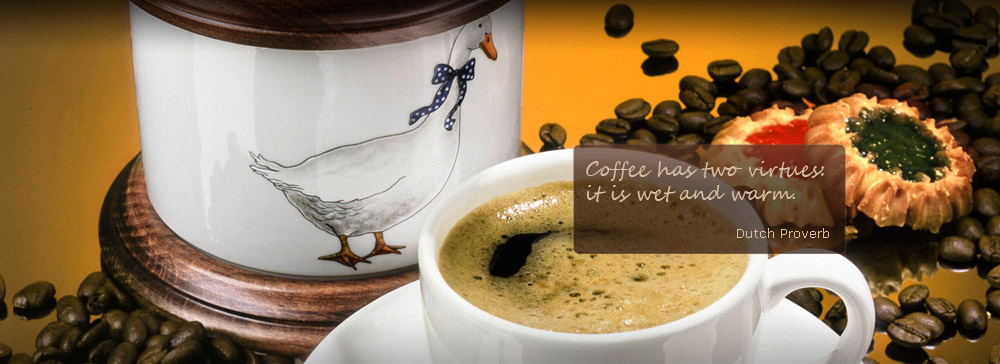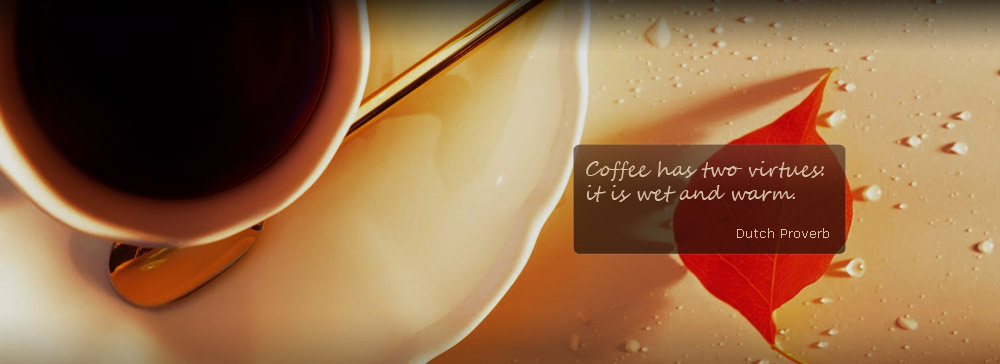| Áúëãàðñêè |

CURIOUS FACTS - Coffee shops - place for inspiration
 |
The first coffee house in Europe - "Caffè Florian" opened in Venice, Italy. It still exists and offers a wonderful view to the famous Piazza San Marco. The first public presentation of coffee took place in France in 1664 at an official lunch in the Louvre. Louis XIV tried a cup of coffee and subsequently issued a decree of approval. The Ambassador of the Turkish Ottoman Empire to the court of Louis XIV in Paris brought coffee into fashion in Parisian High Society around 1669. As laid down by Turkish custom, he offered it to all who came to visit him and persuaded the Sun King to give the drink a try. The King, however, decided he prefered hot chocolate! The first cafe selling coffee was opened in Paris in 1686. Francesco Procopio de Coltelli of Sicily is credited with starting Le Procope - an establishment that's still in business today. It has been the hangout of such luminaries as Voltaire, Diderot and Robespierre. Coffee reached Vienna in 1683, just after the city had been besieged in war with the Turks. The coffee was retained by a Polish Army Officer, Franz Georg Kolschitzky. He had previously lived in Turkey and, being the only person there who knew how to use it, claimed the stocks of coffee left by the fleeing Turkish army for himself. He later opened central Europe's first coffee house in Vienna and was reported to be quite rich as a result of this venture. He also established the habit of refining the brew by filtering out the grounds, sweetening it, and adding a dash of milk hence inventing Viennese coffee and also the pastries served with it. The popularity spread through Europe to such an extent that, during the 17th and 18th centuries, there were more coffee shops in London than there are today. Coffee shops were nothing like the trendy shops that we have today. A true coffeehouse was crowded, smelly, noisy, feisty, smoky, celebrated and condemned. On the street in London you located the nearby coffeehouse by sniffing the air for roasting beans, or by looking for a wooden sign shaped to resemble a Turkish coffee pot. It was the coffeehouses of England that started the custom of tipping waiters and waitresses. People who wanted good service and better seating would put some money in a tin labelled "To Insure Prompt Service" - hence "TIPS". Coffee shops then were influential places, used extensively by artists, intellectuals, merchants, bankers and a forum for political activities and developments. When they became popular in England, the coffee houses were dubbed "penny universities". It was said that in a coffee house a man could "pick up more useful knowledge than by applying himself to his books for a whole month". A penny was the price of a coffee. If it were not for the cafes in Paris and the fact that they attracted revolutionaries then the French could still have a monarchy! In Paris, one cafe had a separate room reserved for fighting duels; another hosted the premiere of the world's first motion picture. Nowadays champions in coffee consumption are the Scandinavians. They consume 14 kilograms of coffee per person within a year. That means nine cups a day. The Italians, however, are the best masters in coffee - preparation in the world. |
2011 © CoffeBase Ltd. All rights reserved. Web design by SP Vision Ltd.




